This is the section dedicated to the Joker from THE BATMAN VAULT: a museum in a book featuirng rare collectibles from the Batcave, edited by Robert Greenberger and Matthew K Manning. (2009). I had posted it on my old blog and now revised and and present it here for your enjoyment.
THE JOKER
It could be just another one of his lies. He’s told his origin more times than most can remember, each version a bit more bizarre than the last. But there’s been one that’s stuck, a tale that rings a bit truer than the others.
He was a comedian wtih a pregnant wife, but he wasn’t very funny. With no money to support his growing family, he took a job with some men he shouldn’t have. He dressed up in a red helmet and a cape. Alongside the men who brought him into this new life of crime, he helped rob the Ace Chemical Processing Plant. When Batman showed up, the man in the red cape was startled by the giant bat creature and leapt into a vat of toxic chemicals. He emerged with bleached skin, green hair, and a smile on his face.

(This is the original art from the 1944 “BATMAN AND ROBIN” daily newspaper strip showing the Joker preparing to escape prison…yet again. Script by Bill Finger, art by Bob Kane and Charles Paris. The whole story is reprinted in the volume BATMAN: THE DAILIES 1941-1946).
As editorial mandates began to lighten the Batman’s character in the ’50s, his new archfoe began to brighten with him. Joker’s murderous rampages became elaborate, only slightly dangerous pranks, his clown persona taking on a more traditional role. Readers were finally treated to an origin in DETECTIVE COMICS #168 (February 1951)entitled “The Man Behind the Red Hood” It was from this story that Alan Moore drew heavily to create his 1988 masterpiece BATMAN: THE KILLING JOKE that solidified Joker’s modern origin in the eyes of most fans and creators.
Despite the Comics Code taking the edge off his brutal crimes, the Joker’spopularity never waned and he became a frequent guest on the ABC Batman show of the 1960s. His character was brilliantly portrayed by the legendary Cesar Romero, even though Romero refused to shave his trademark mustache for the part and instead simply covered it with white greasepaint. FInally established as Batman’s archfoe, the Joker went on to make frequent appearances on Batman’s animated cartoons and surfaced in many a comic cover and piece of Batman’s-related merchandise during the 1960’s.
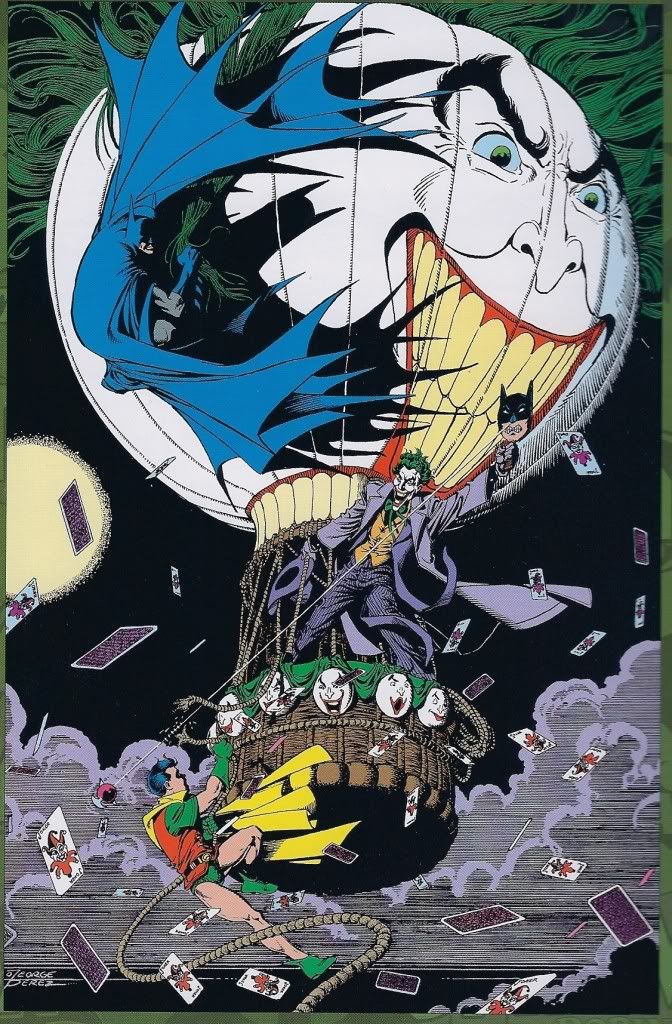
(This beautiful pinup was drawn by George Perez for a 1960’s collection of posters. It was colored by Drew R. Moore for his own portfolio of sample work).
Leave it to writer Denny O’neil to return the character to his roots. In 1973, O’neil, along with frequent collaborator Neal Adams, forged the landmark “Joker’s Five-Way Revenge” in BATMAN #251, in which the Clown Prince of Crime returned to his murderous ways, killing his victims with his trademark Joker venom and taking much delight from their sufferings. And with an audience happily devouring every darker and more serious issue of BATMAN to be found, in 1975, the Joker even earned his first and only ongoing comic series. Despite lasting just nine issues due to complications with the strict Comic Code, the series featured guest appearances by Two-Face, Catwoman, Lex Luthor, Green Arrow and even Sherlock Holmes himself.
In the years that followed, the Joker was once again reduced to making frequent appearances in Batman’s various titles. In DETECTIVE COMICS #475 (February 1978), writer Steve Engleheart and artist Marshall Rogers Granted Joker the highly lauded “Laughing Fish” story. In this fondly remembered tale that was later adapted into an episode of the 1990s cartoon BATMAN: THE ANIMATED SERIES, the Joker poisoned the harbors of Gotham so that the fish would all bear his signature grin, a look the Joker then tried to trademark in order to collect royalties from the county.
Once again a ruthless killer, the theatrical antagonist, and a criminal more insane than any of his peers, the Joker seemed tailored-made for the mature storytelling that would be birthed in the 1980’s. He quickly became target of fascination in important works such as Alan Moore’s BATMAN: THE KILLING JOKE, Grant Morrison’s BATMAN: ARKHAM ASYLUM and Jim Starlin’s “Death in the Family”. In this titles, the Joker proved exactly why he has Batman’s archfoe, as he paralyzed former Batgirl Barbara Gordon, overthrew Arkham Asylum and claimed it as his won and brutally beat and murdered the second Robin, Jason Todd. The Joker had become a serious contender, a criminal the criminals feared and so it made sense when Jack Nicholson stole the show as the archfiend in 1989s blockbuster film BATMAN.
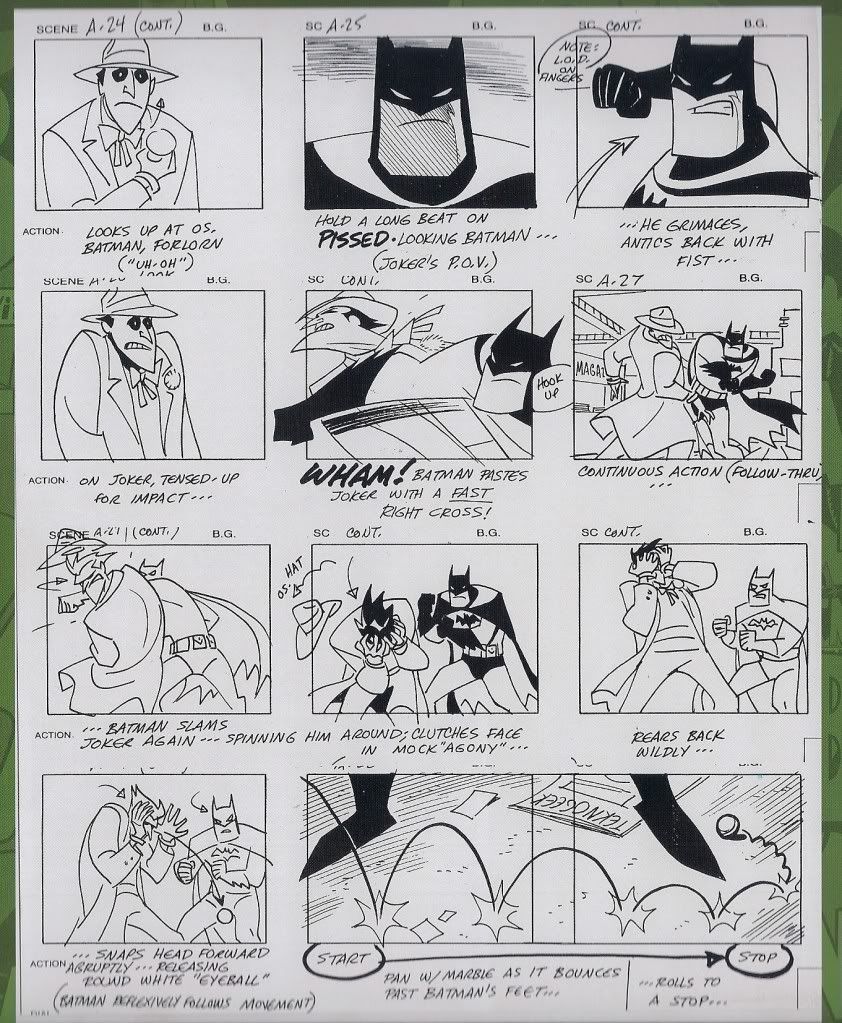
(Writer Paul Dini adapted the classic 1932 comic story “THE JOKER’S MILLIONS” for an episode of THE NEW BATMAN ADVENTURES animated series in 1998. This storyboards were drawn by Bruce Timm.)
As the Joker continued his crime sprees in both the comics and in various appearances in the 1990s cartoon BATMAN: THE ANIMATED SERIES, voiced by STAR WARS’ own Mark Hamill, his solitary mission against the sanity of Gotham would soon earn a plus-one in the form of the twisted Harley Quinn. The Arkham Asylum psychiatrist Dr. Harleen Quinzel turned into a loyal follower of the Joker after falling desperately in love with him. She dressed up in a Jester costume, to embark on what she considered a loving relationship with her “Mr. J”. In reality, Harley was the victim of an abusive romance, one explored by her creators in the pages of the award-winning comic from 1994, THE BATMAN ADVENTURES: MAD LOVE.
Created for BATMAN THE ANIMATED SERIES by writer Paul Dini and artist Bruce Timm, , Harley became a cult sensation, finally emerging in the Batman comic book universe proper in the pages in 1999’s BATMAN HARLEY QUINN SPECIAL Since that time, Harley has made frequent appearances beside her Clown Prince charming, as well as with her fellow gal pal and Arkham regular, Poison Ivy. In 2000, she was even granted her own monthly ongoing series that lasted thrity-eight issues.
With or without Harley, the Joker continued to be a significant player throughout the DC Universe. He proved once again to be a disturbing presence in Commissioner Jim Gordon’s life when he shot and killed Gordon’s wife, Sarah, at the conclusion of the “No Man’s Land” crossover of 2000 in DETECTIVE COMICS #741. In 2001, the Joker even usurped magical fifth-dimension powers from Superman’s menace Mr. Mxyzptlk, and became Emperor Joker, ruler of his own reality and the subject of a major Superman storyline. When the Joker released his patented Joker gas on heroes and villains alike, he was granted his own companywide crossover, grounded by a miniseries entitled JOKER: LAST LAUGH.
[Joker was also brought back in the futuristic direct-to-movie BATMAN BEYOND: RETURN OF THE JOKER. Here are a few production drawings for the Joker tank and Joker-mobile designs for the movie]
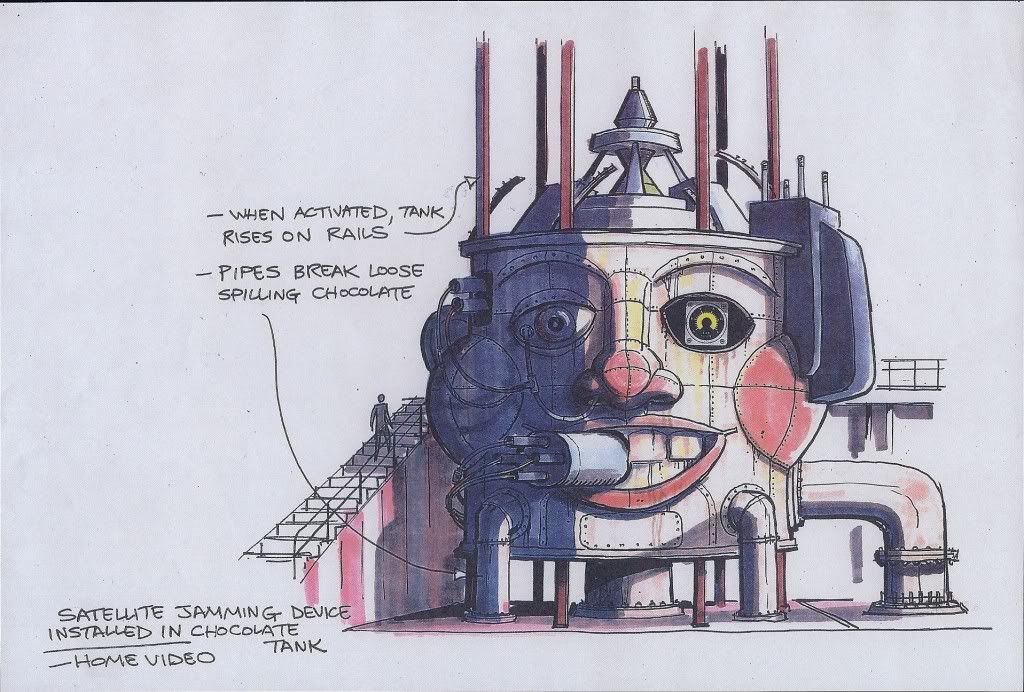
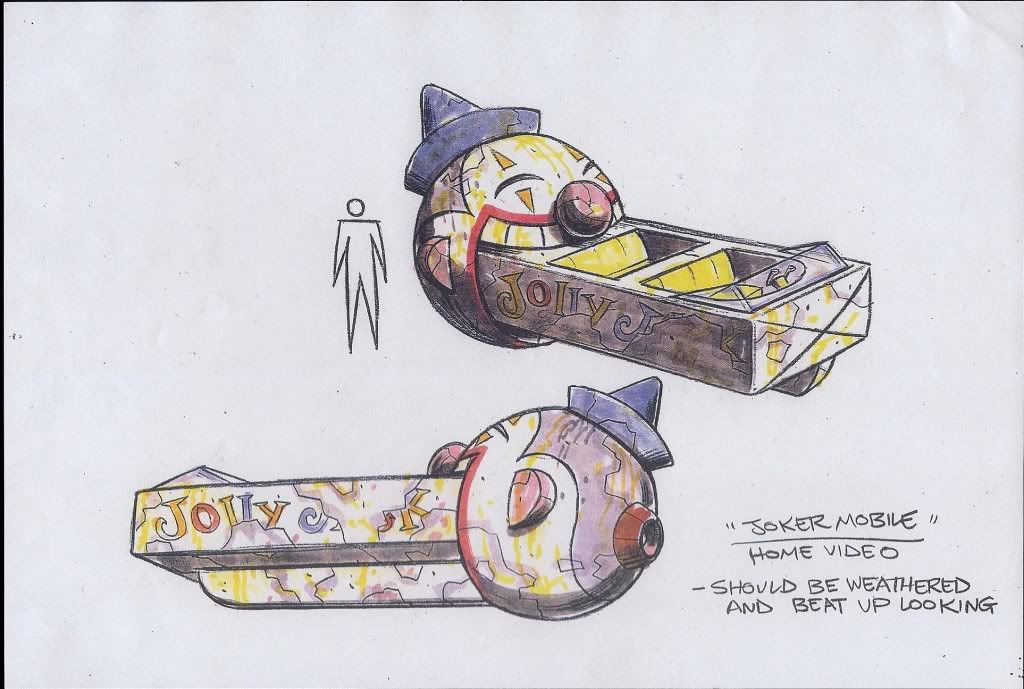

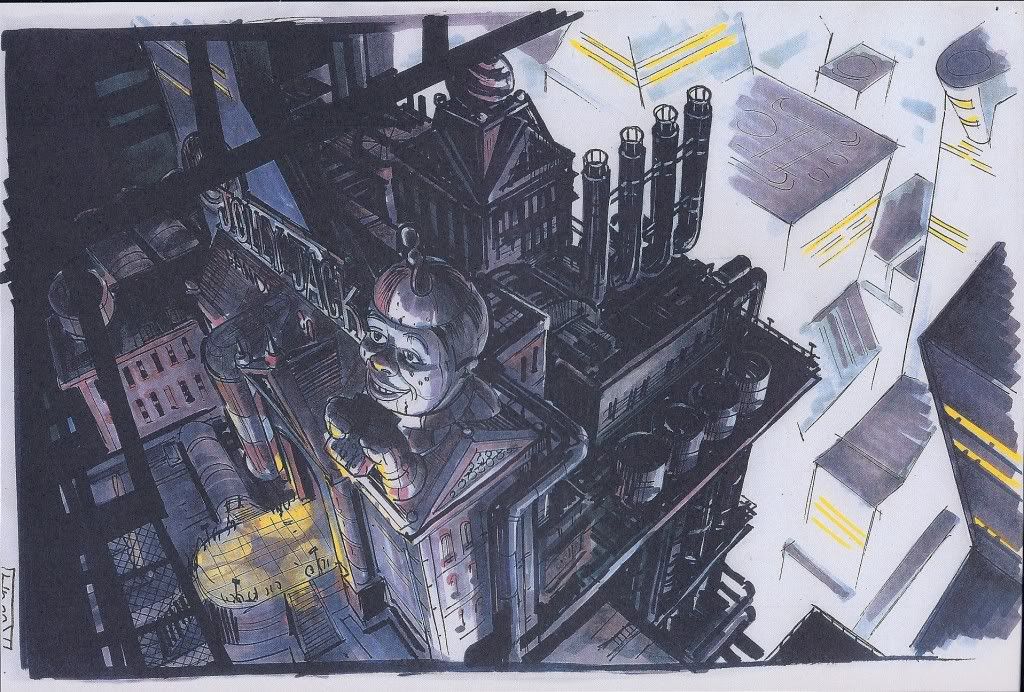
In 2008, the Joker would once again blow the roof off his own house of cards. Just as Nicholson created quite a stir withhis performance in the 1989 BATMAN film, actor Heath Ledger” unveiled what would perhaps be his most memorable character in Christopher Nolan’s 2008 film THE DARK KNIGHT, Ledger’s last performance before his untimely death prior to the premiere. Ledger astounded audiences with his twisted rendition of the familiar sociopath, and the actor once again put the Joker in the public eye, creating a version that was remarked in everyting from toys to Halloween costumes.
A constant thorn in Batman’s side to this day, a twisted soul like the Joker would be enough to fill any crime fighter’s plate. Arkham Asylum is anything but a lonely place, however, and the Clown Prince of Crime has more than a few competitors in the race for the Batman’s throat.
